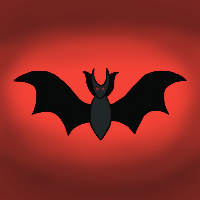- BTC Dominance: 53.56%
- Vol 24h: $132 822 305 284
- Market Cap: $2 499 966 907 058 (2.65%)
- BTC Dominance: 53.56%
- Vol 24h: $132 822 305 284
- Market Cap: $2 499 966 907 058 (2.65%)
DRAC (Ordinals) (DRAC) Metrics
DRAC (Ordinals) Price Chart Live
About DRAC (Ordinals)
DRAC (Ordinals) [DRAC] is a token based on Bitcoin blockchain. The most actual price for one DRAC (Ordinals) [DRAC] is $0.002371. DRAC (Ordinals) is listed on 1 exchanges with a sum of 1 active markets. The 24h volume of [DRAC] is $1 182.25, while the DRAC (Ordinals) market cap is $253 267 which ranks it as #1625 of all cryptocurrencies. You can find more information about DRAC (Ordinals) [DRAC] on unisat.io
DRAC Markets
Trends Market Overview
News All News
DRAC (Ordinals) Basics
| Website | unisat.io |
|---|---|
| Wallet | Coins Mobile App |
| Asset type | Token |
|---|---|
| Contract Address |
| Explorers (1) | ordinalswallet.com |
|---|
| Tags |
|
|---|
Frequently Asked Questions
Frequently Asked Questions
How to buy DRAC (Ordinals)? How can I buy the DRAC (Ordinals) coin? DRAC (Ordinals) stock how to buy? How to get DRAC (Ordinals)?
To find out where you can buy currency DRAC (Ordinals) see the list of available exchanges.
Where to trade DRAC (Ordinals)?
Click here to see the list of available exchanges for DRAC (Ordinals).
DRAC (Ordinals) is a token and it means it is a cryptocurrency, which based its activities on the blockchain of other cryptocurrencies such as Ethereum Blockchain or EOS Blockchain. Examples of Tokens: Chainlink, OmiseGo, 0x.
What is the value of DRAC (Ordinals) coin?
1 DRAC (Ordinals) is worth $0.002371.
To get price and historical data for DRAC (Ordinals) coin, use API ID: drac-drac-ordinals for endpoints at http://api.coinpaprika.com.
Similar Coins
Infinity Angel
$0.000053
+8.07%
#1626Ojamu
$0.003125
+3.23%
#1627Babylons
$0.002656
-8.06%
#1628Empire Token
$0.000290
-0.87%
#1629XP Network
$0.001783
-0.43%
#1630OnGO
$0.002036
-0.51%
#1631SportsIcon
$0.024262
+12.08%
#1632BlackHat
$0.021431
-5.04%
#1633Legends of Elysium
$0.047616
+5.25%
#1634






